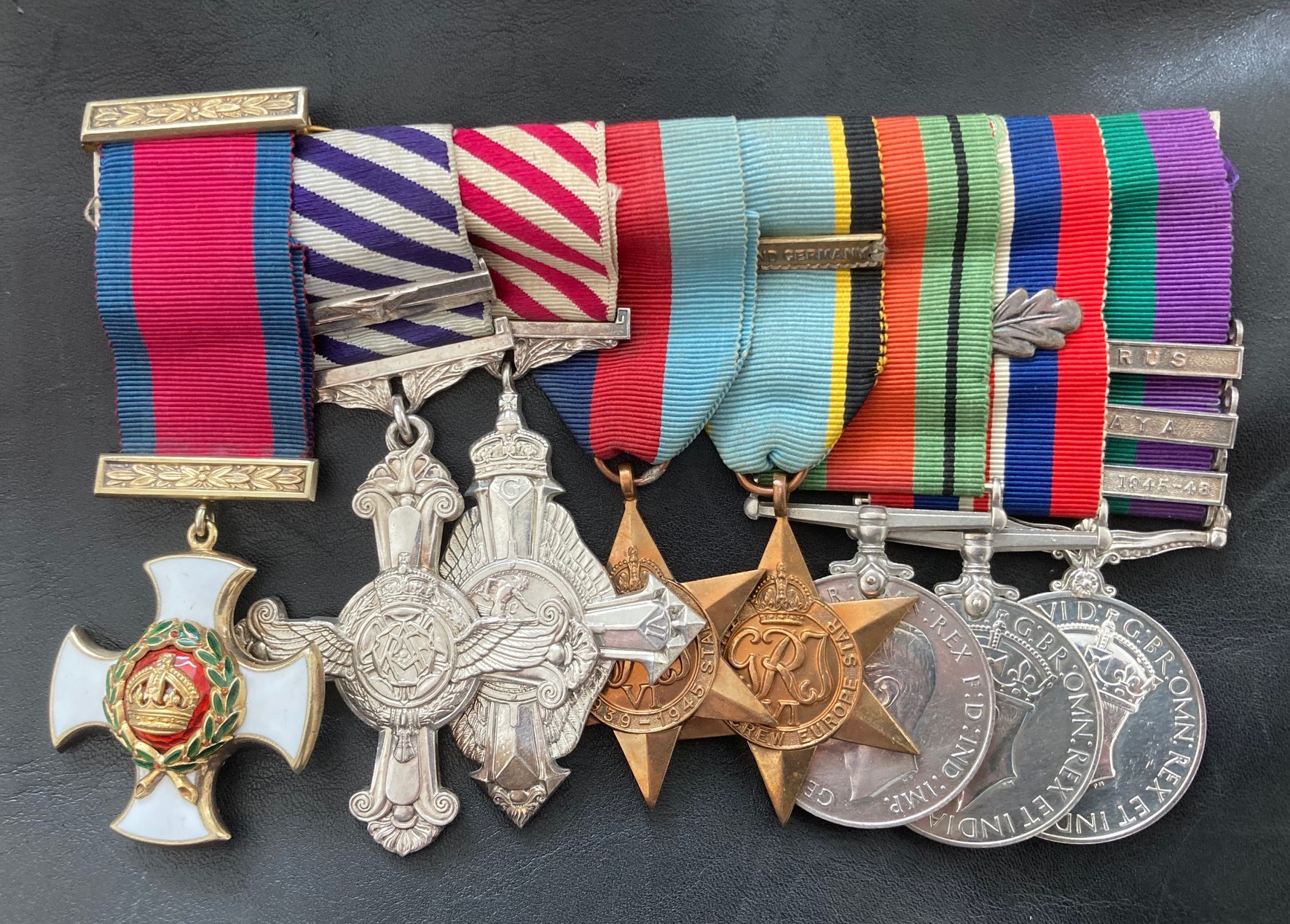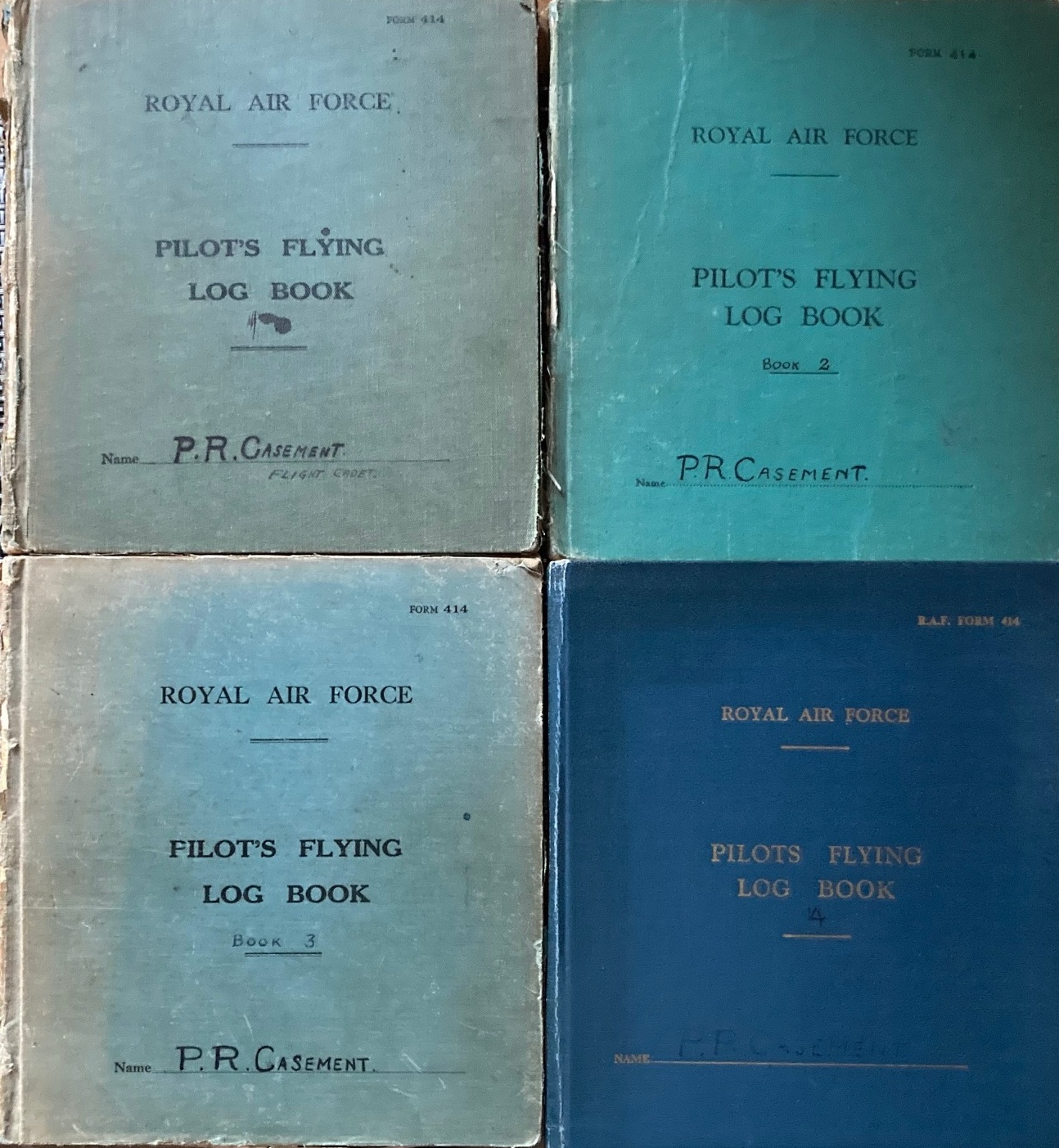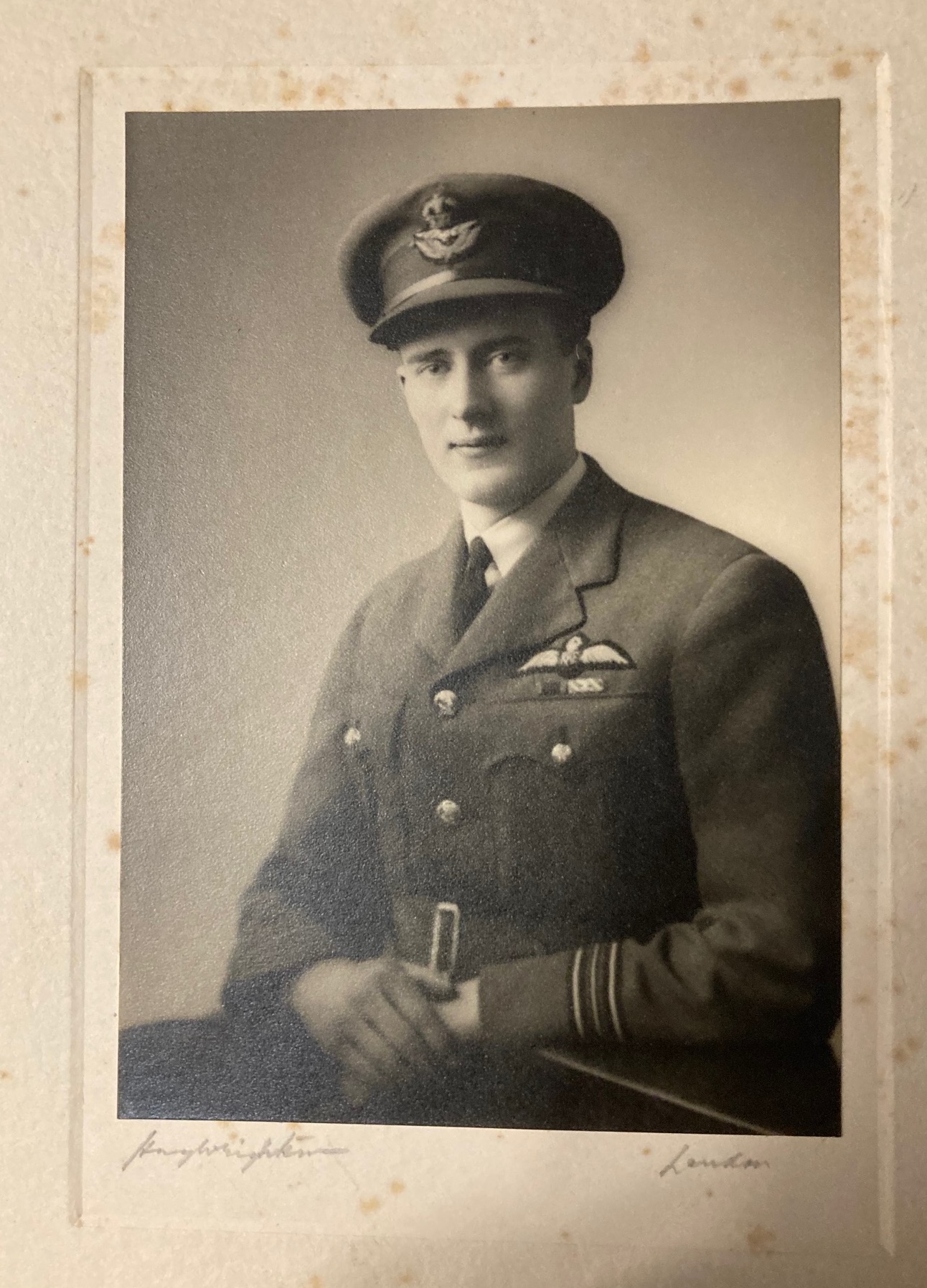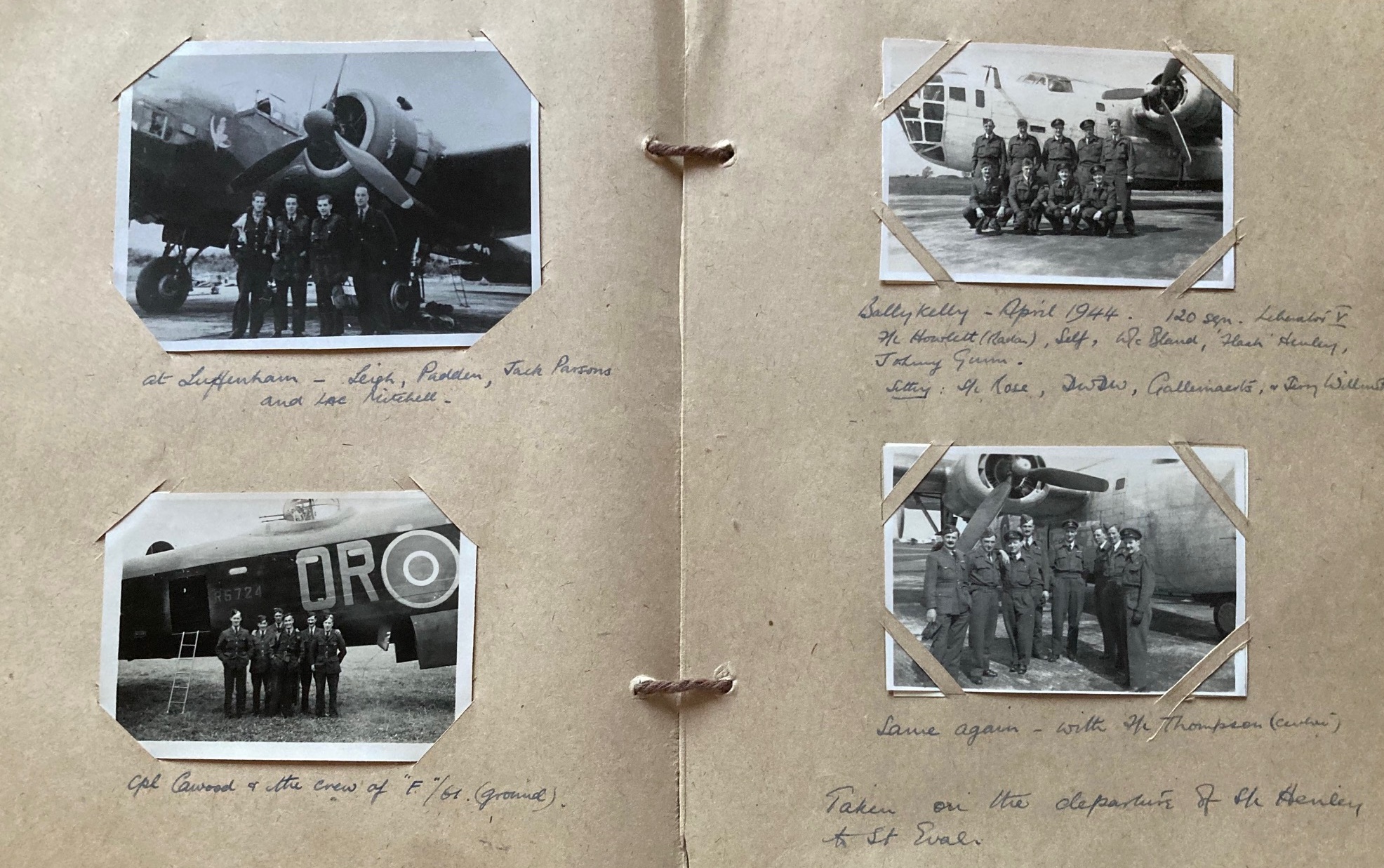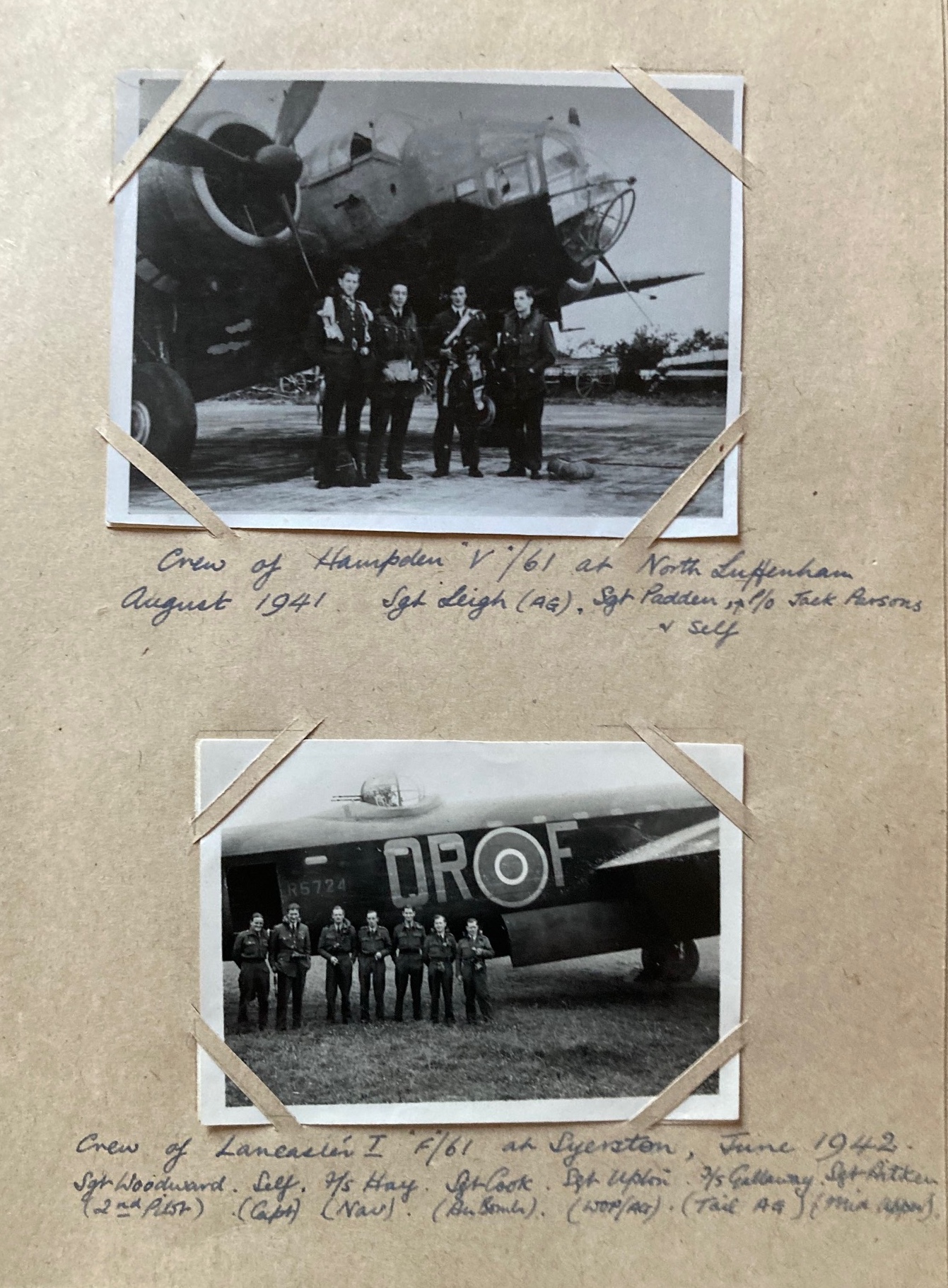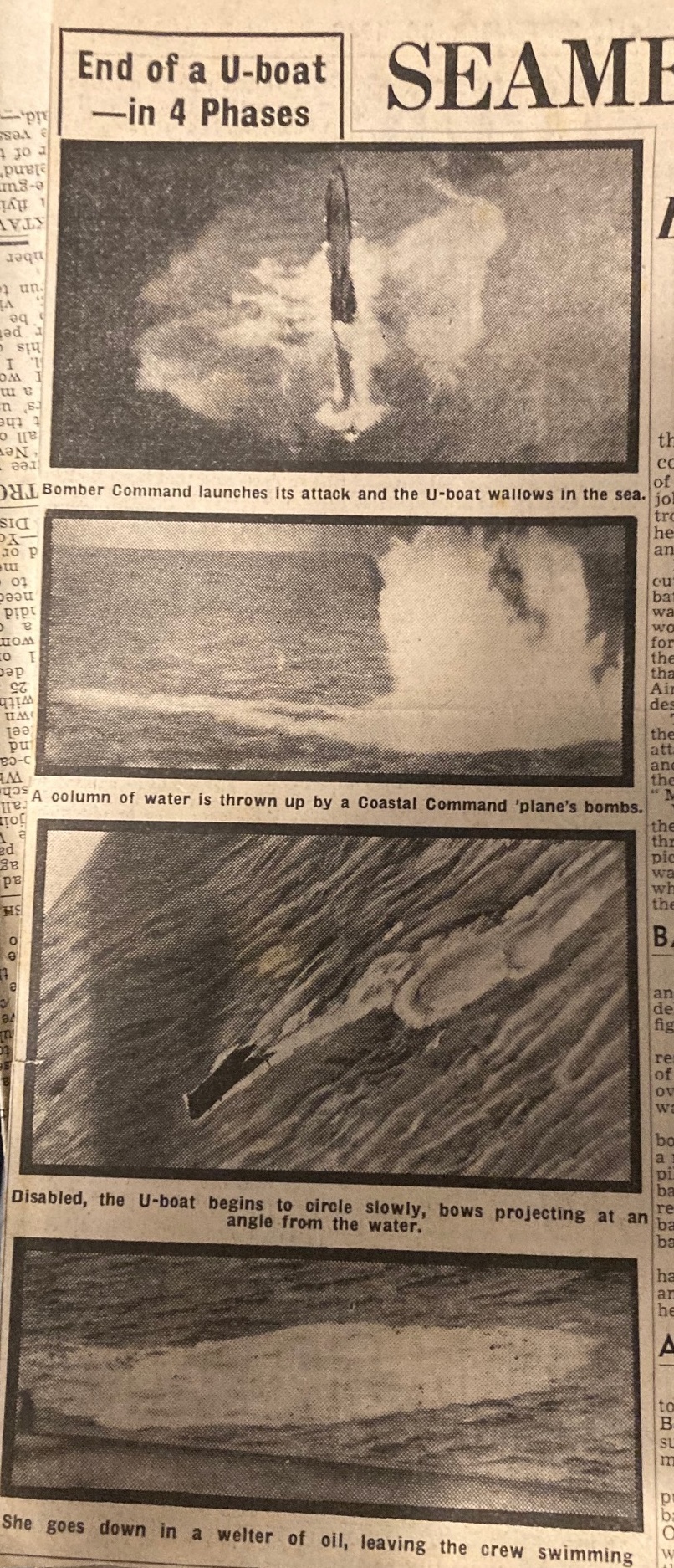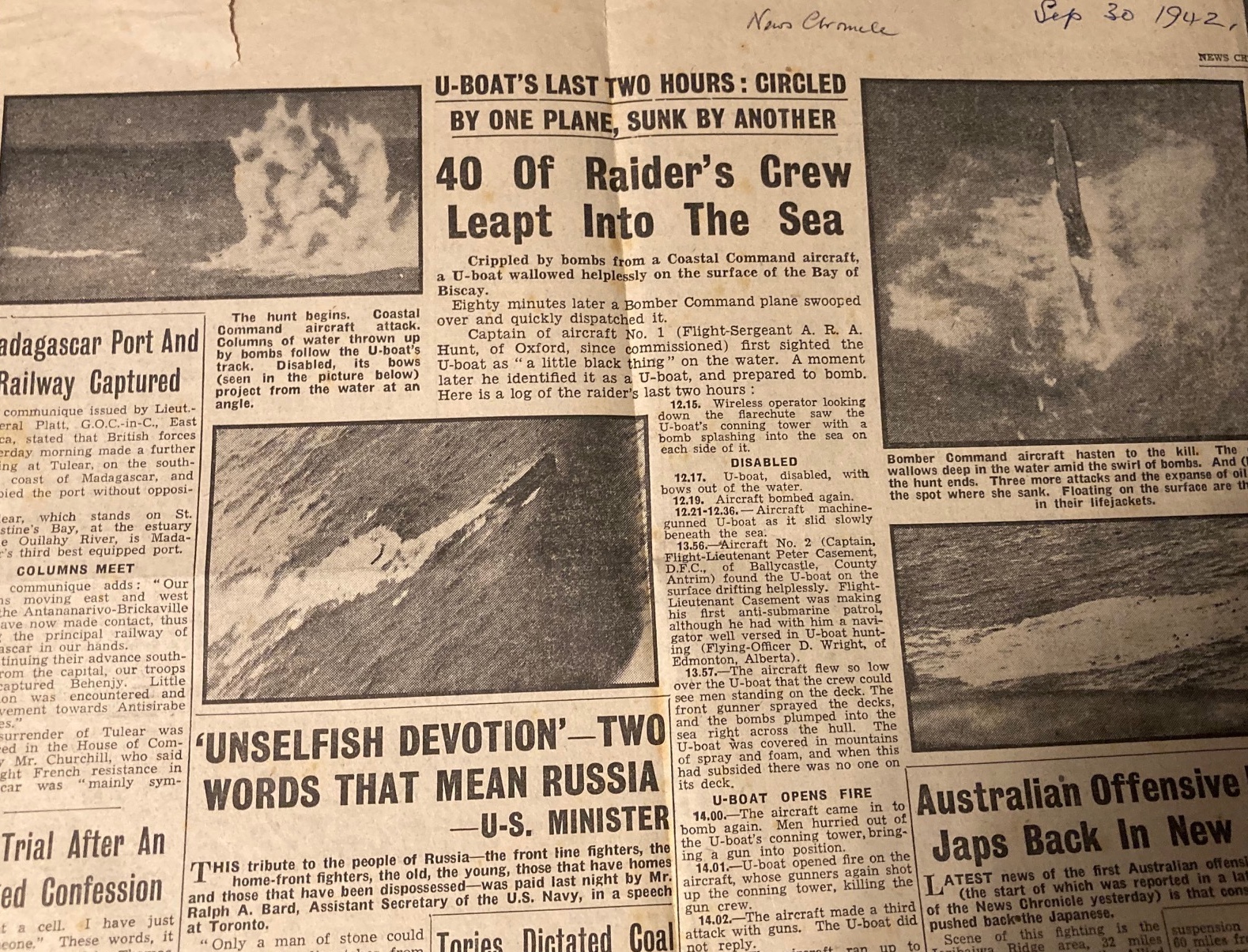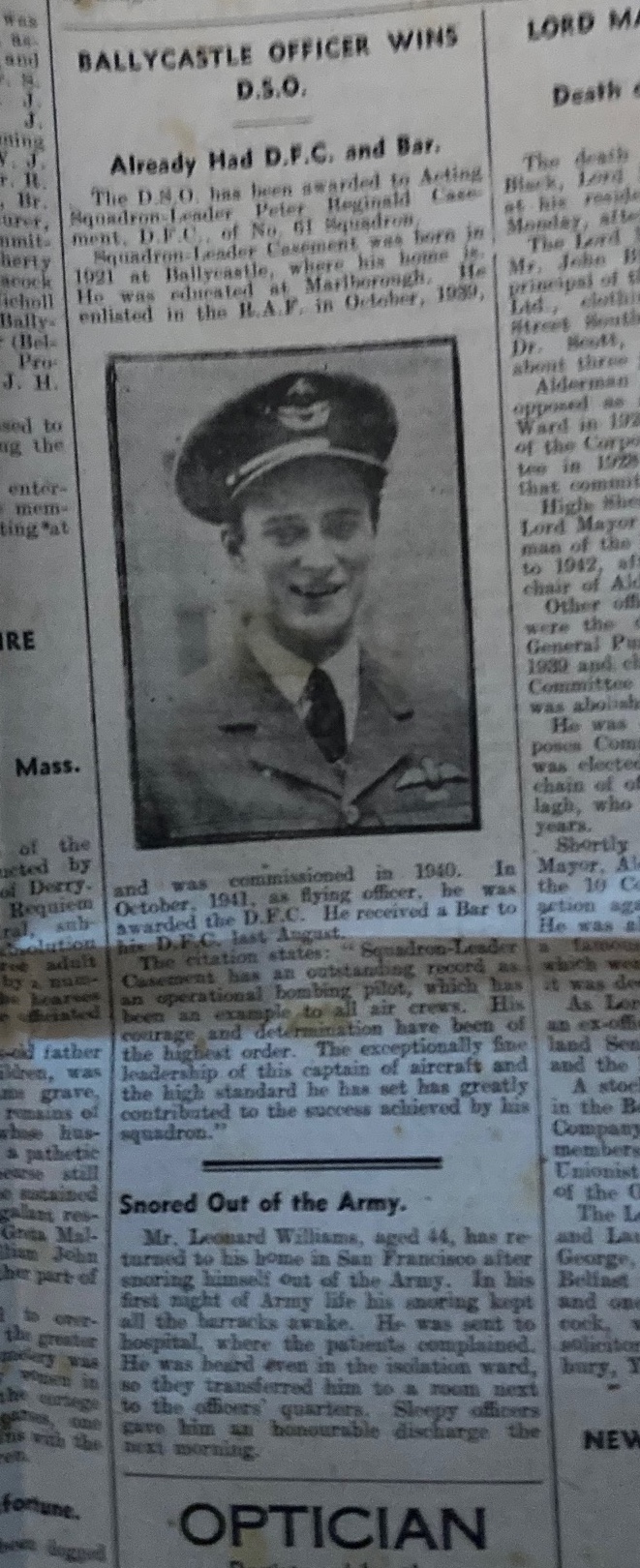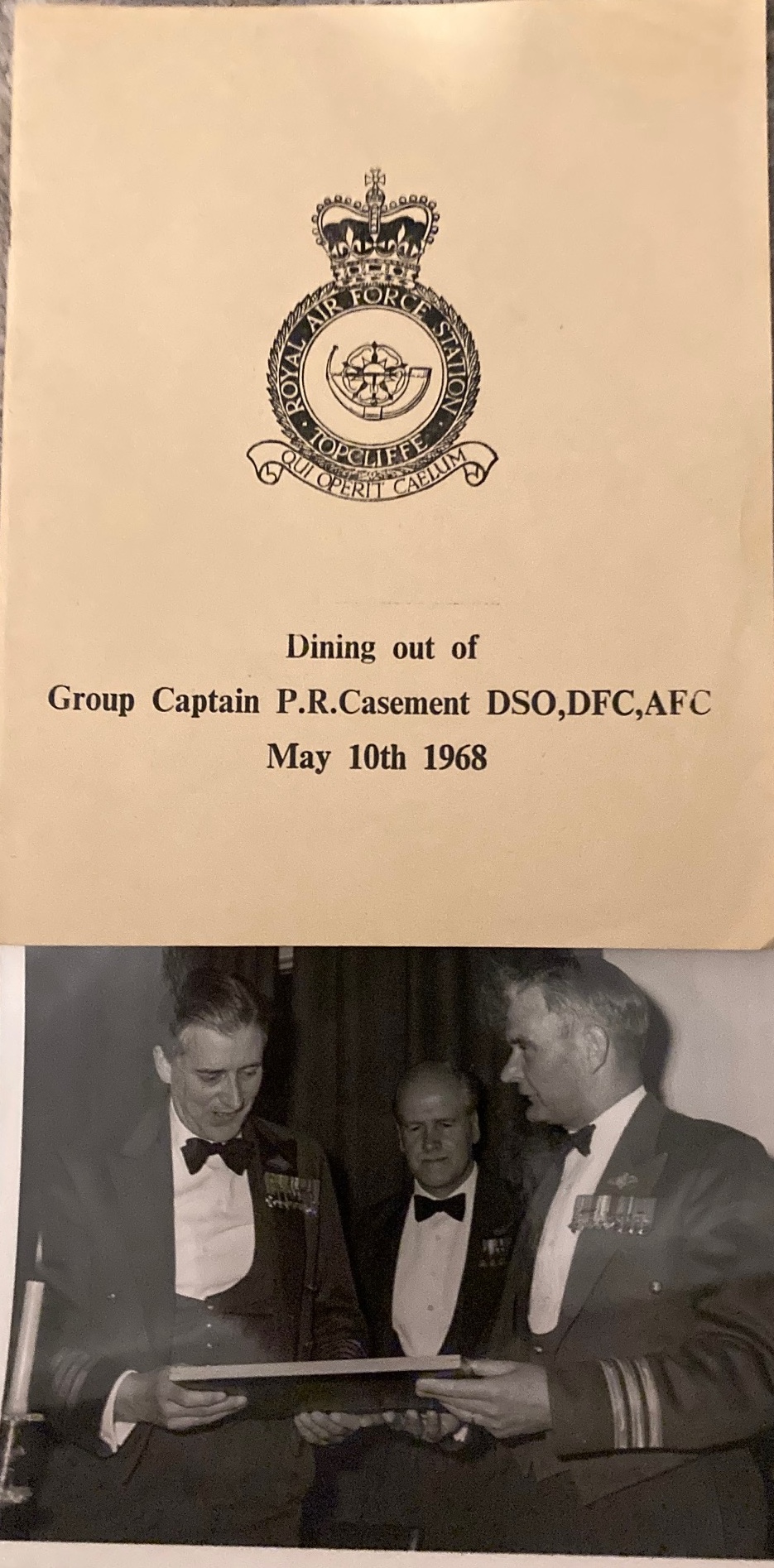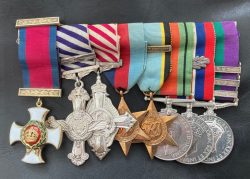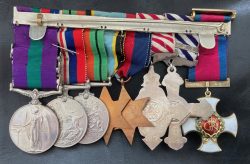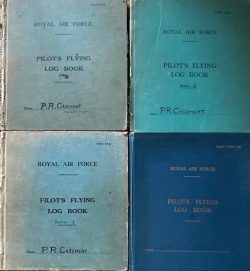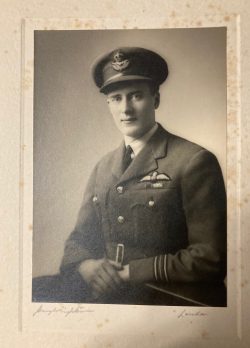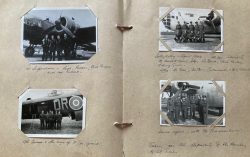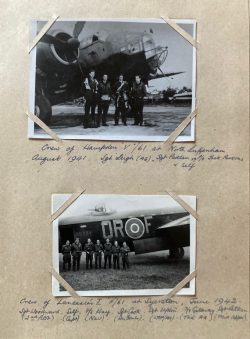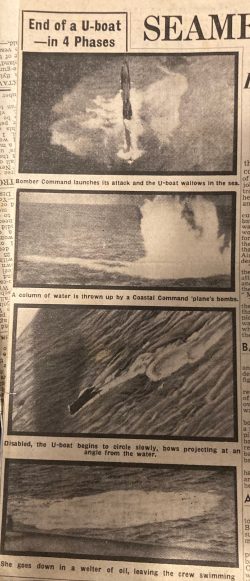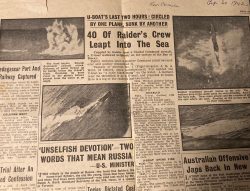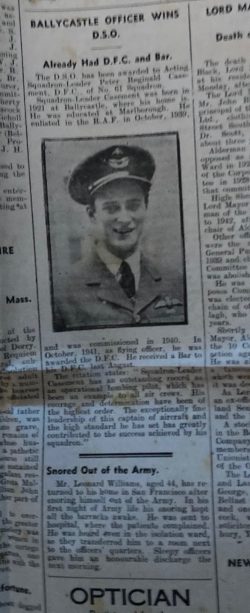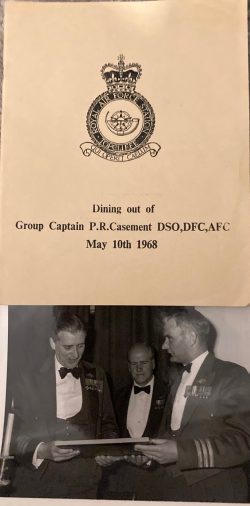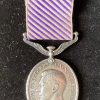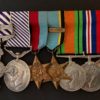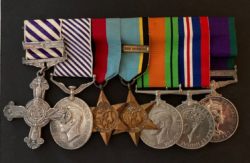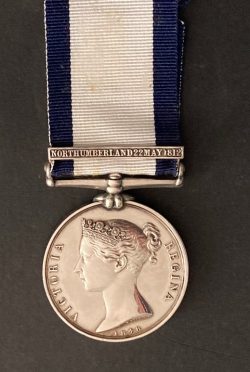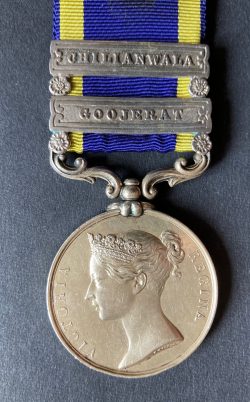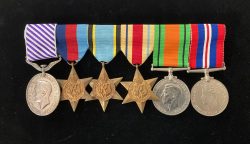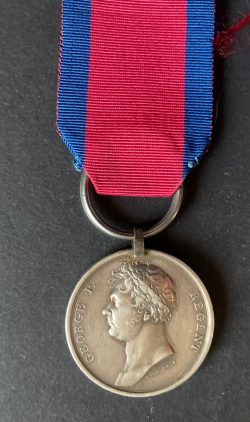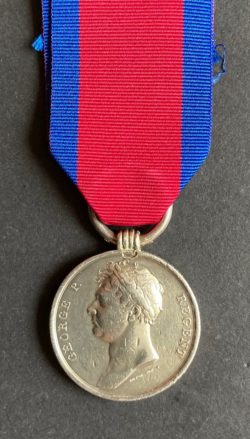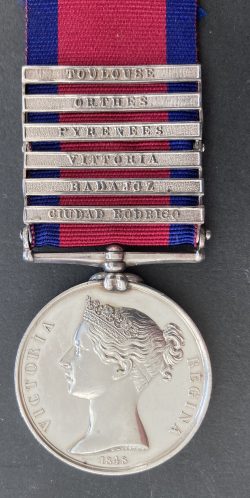Subtotal: £3,250.00
DSO, DFC and Bar, AFC, MID with 3 clasp GSM Pilot’s group of eight Wing Commander 2 tours with 61 Squadron (Hampdens & Lancasters), mostly on heavily defended German targets. Awarded a Bar to his DFC for the sinking of U751 by a low level attack with his Lancaster in so providing the first irrefutable photographic evidence of his ‘kill ‘ and a remarkable instance of the sinking by a front line bomber squadron. A detachment of 61 Sqdn (Lancaster) ‘loaned’ to Coastal Command. along with a complete set of Log Books
£15,000.00
Out of stock
Distinguished Service Order, (GV1). reverse officially dated ‘1942’, with top riband bar, Distinguished Flying Cross, (GVI)., the reverse officially dated ‘1941’, with Second Award Bar, the reverse officially dated ‘1942’, Air Force Cross, (GVI).type 2, the reverse officially dated ‘1951’; 1939-45 Star; Air Crew Europe Star, copy clasp, France and Germany; Defence and War Medals 1939-45, with M.I.D. oak leaf; General Service 1918-62, 3 clasps, Palestine 1945-48, Malaya, Cyprus (Sqn. Ldr. P. R. Casement. R.A.F.), clasps loose upon riband,
Mounted as worn
With 4 log books, commencing 1939 until 1967.
A fine small service photo album
2 diaries finely and extensively detailing each of his ops. 30 in the first diary ,and the first 7 in the second. The 7th receiving a sparse mention before seemingly losing interest. A highly unusual record.
Extensive file of original newspaper cuttings and other documents.
Commission warrant as Pilot Officer, 21/7/1940
Warrant for the award of the D.S.O.
M.I.D. Certificate , 1/1/1945
DSO L.G. 29/12/1942
Recommendation
‘Squadron Leader casement has an outstanding record as an operational bombing pilot, which has been an example to all air crews. His courage and determination have been of the highest order. The exceptionally fine leadership of this captain of aircraft and the high standard he has set has greatly contributed to the success achieved by the squadron.’
DFC L.G.. 24/10/1941
Awarded immediately following his first tour as captain of aircraft with 61 Sqdn.
Bar to DFC L.G. 1/9/1942
Recommendation
“Flight Lieutenant Casement is an outstanding captain and pilot. He has completed numerous operational missions, during which he has attacked highly important industrial targets in Germany; he has also completed several patrols over the Atlantic and has assisted in the destruction of a U-boat. Throughout his operational career, this officer has displayed great efficiency and devotion to duty which have proved a source of encouragement to his fellow captains.”
A.F.C. L.G. 7/6/1951 Service in command of 210 Squadron
Commanded 210 (Lancaster) Sqdn. From April 1949 to June 1951
21 July, 1940: Pilot Officer on Probation, 21 July, 1941: Flying Officer (war sub) 21 July, 1942: Flight Lieutenant (war sub) 1 August, 1947: Squadron Leader 1 July, 1951: Wing Commander 1 January, 1960: Group Captain
Group Captain Peter Reginald Casement was born in County Antrim in 1921 He was educated at Marlborough College. His flying career began in 1939 when he learnt to fly Tiger Moths in Coventry; he undertook his first solo flight after just 11 hours and 30 minutes of training. October 1939, Cranwell, 14 OTU and He joined No 61 Squadron (Hampdens). His first 5 ops were as Navigator, commencing Dec 1940 to Wilhelmshaven then 28 ops as captain of aircraft of which 27 were over Germany.
Ending his first tour in October 1941 .
He was then posted to 16 OTU though attached for 2 weeks in February 1942 to 144 (Hampdens) when he participated in 4 ops over Germany. In May , 1942 it was back to 61 Sqdn. Now on Lancasters commencing on 31 May to Cologne – the first 1000 bomber raid.
Among his notes for that day he records ‘An inauspicious start as Cook did not feel fit enough to fly – even in the Front Turret, so we went without a Front Gunner. Immediately after take off we had a very close shave, passing about 6 feet below another Lancaster going in the opposite direction’.
In July, during the Battle of the Atlantic , he was ‘loaned’ for one week to Coastal Command. He completed two anti-sub patrols and remarkably on his first patrol completed he destruction of a U-Boat with. More remarkably by a low level attack with his Lancaster and the first to bring back photographic evidence of the sinking of a U-boat with the surviving crew swimming away from the sinking u-boat. Though none were to survive.
The British national press celebrated his achievement, printing the four photographs together with minute-by-minute accounts from the Air Ministry News Service. These historic photographs plus his hand written descriptions are in an album included in the lot.
At this time,Coastal Command had a difficult period in coping with the U Boat threat and did not have adequate aircraft to reduce the threat .The problem was compounded by an unexpected delay with the Liberator being delivered for the role.The situation with Coastal Command was critical and it caused ructions among Air Officers of Bomber Command (Harris) and Coastal Command (Joubert) .Harris saw as the forced transfer of his aircraft when Joubert asked for Lancasters to fill the gap.The Admiralty had already in February 1942 had asked for 6 and a half squadrons of Wellingtons to be transferred to Coastal Command.
In the end the Air Ministry, being aware of the overall priorities did not force the transfer of Lancasters to Coastal Command,they would be loaned,ie detached and the squadrons selected were No 61 Squadron out of their new base of Syerston to St Eval with 9 aircraft and No 44 Squadron out of Waddington to Nutts Corner with 5 aircraft.Both squadrons were without training in the anti U Boat role.16 Whitleys of No 10 OTU,Bomber Command,flown by instructors and students were detached to St Eval for the last three weeks of their course for Bay of Biscay patrols,the practice being in place for almost a year.
No 61 Squadron’s detachment arrived at St Eval on 14 July 1942 and took advantage,I would think of Ultra intelligence,of a directive of Doenitz’s which instructed that U Boat commanders should remain submerged except when recharging batteries while routing through the Bay of Biscay.This was seen as an excellent opportunity to attack U Boats on the surface.On the 17 July 1942 the strategy brought dividends. On his first A/S patrol F/L P R Casement’s crew spotted a large oil patch and later a conning tower.The aircraft was well loaded with anti submarine armaments,carrying 10 Mk V111 depth charges and 2 x 250 lb AS bombs.Three runs were made across the U 751, a Type V11c boat which slowly sank stern first ,as a result of the attack.
On the 19th Casement carried out a second (and final) A/S patrol before returning to ops and Germany a week later
From various newspaper articles of the time.
‘U-Boat’s Fate in Bay of Biscay
Sunk by Ulster Officer
Log of Flight
13.56 aircraft No.2 Captain, Flight Lieut. Peter Casement, D.F.C. of Ballycastle, Co. Antrim, found the U-boat on the surface, drifting helplessly on the edge of pool of oil bigger than a football pitch.
13-57 -0 The aircraft flew so low over the U-boat that the crew could see men standing on the deck and conning tower. The front gunner sprayed the decks and the bombs plumped into the sea right across the hull. The U-boat was covered in mountains of spray and foam, and when this had subsided there was no one on its deck.
14-01 – U-boat opened fire on the aircraft, which again shot up the conning tower, killing the gun crew.
Third Attack
14.02 – The aircraft made a third attack with the guns. The U-boat did not reply.
14.04 – The aircraft ran up to bomb again. A fresh crew had got to the gun, for the submarine opened fire.
14-10 – The U-boat began to sink for the last time. Men scrambled wildly out of the conning tower. They dived overboard as the U-boat dipped below the surface.
14.13 – Some 40 of the U-boat’s crew in the water and oil.
14.14 – The conning tower disappeared. The aircraft flew low over the survivors and dropped a sea marker in case rescue was possible.’
Back on ops on the 26th of the month with a trip to Hamburg same day. Another short detachment to Coastal Command came in August. He completed his second tour comprising 26 ops (25 to Germany) and 4 A.S. patrols. The former included the daytime raid on the submarine pens at Danzig being the longest daytime raid.
In October 1943 to Sept. 1944 he was back on active service though on A.S. patrols on Liberators with 120 Sqdn based at Reykjavik – somewhat colder but safer.
Post War he served at RAF Amman in the Middle East and serving in Palestine with the Levant Communications Flight, was made a Squadron Leader in August 1947. Casement returned home in 1948 to continue his career at RAF St Eval, Cornwall and at the Joint Service Defence College Latimer, Buckinghamshire. Made Wing Commander on 1 July 1951, he was the youngest Officer in the Royal Air Force to hold that rank at that time. Casement served in Cyprus during the Suez Crisis and also in Malaya. His later career included stints at RAF Binbrook, working back home in Northern Ireland where he was attached to Sea Eagle, working with NATO Submarines and RAF Mountbatten in Plymouth. Casement ended his career as Station Commander of RAF Topcliffe in Yorkshire in 1966. When Casement retired in 1968, he had flown some 3,800hrs in 27 different aircraft. The Group Captain died on 12 December 2016.
Resided in South Devon in the mid-1970s until his death in 2016 aged 95.
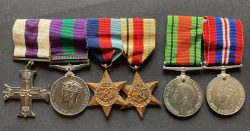 Military Cross group, a fine award for Palestine operations 1939, Highland Light Infantry
Military Cross group, a fine award for Palestine operations 1939, Highland Light Infantry 